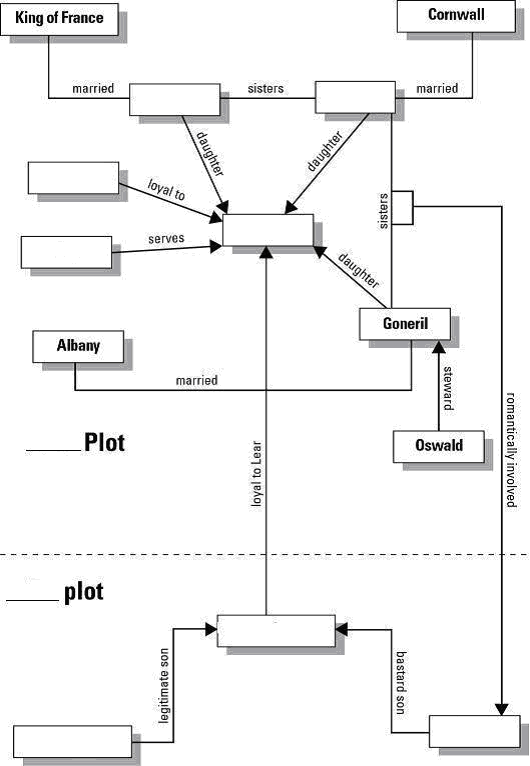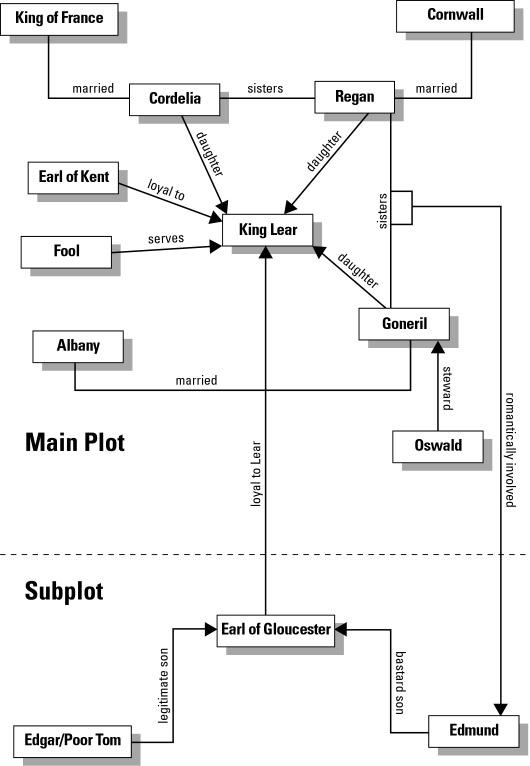|
Love and Justice in The Family
PERIOD 4
Text Two – “Is not this your son, my lord?” (Act 1, Scene 1, ll. 1-35)
BEFORE READING ACTIVITY
THE INQUIRY FRAME: LOVE AND JUSTICE IN THE FAMILY (15 min.)
AIM: To approach the theme of love and justice in the family. The practice of combining love and justice in the governance of relationships between parents and children is crucial to the moral formation of the young. PROCEDURE: Students should be more comfortable discussing difficult themes in the play by
writing about them in response journals. The teacher should take every opportunity to help students make connections between the play and their personal lives and invite students to relate their own experiences to that of the characters. Such comparisons between personal and fictional accounts make the play more accessible to students. The teacher asks his/her students to write a short paragraph about the topic. After ten minutes, he/she gets a class feedback (five minutes to do the activity, ten minutes for oral feedback).
What happens when a child has been unjustly despised and rejected by a parent?
KEYS
Students give their personal responses.
WHILE READING ACTIVITY
THE TRAGEDY OF GLOUCESTER (20 min. including oral check )
AIM: To focus on the problematic relationship between Gloucester and his illegitimate son, to introduce the subplot and its relationship with the main plot. PROCEDURE: The teacher hands out a photocopy of the first scene of the play (one per student) and asks his/her students to underline the words spoken by Gloucester in relation to Edmund. Students work in small groups of three or four. Once they have focused on Gloucester’s words, they are ready to answer this set of questions.
Consider the first scene of the play. Underline the words spoken by Gloucester in relation to Edmund, then answer the following questions.
1.What is special about Edmund’s position in his family?
2.Do you approve of Gloucester’s treatment of him in this scene?
3.How does Edmund reply to his father’s saucy comments? Why?
4.How do you imagine that Edmund feels towards his father?
5.Why does Shakespeare privilege Gloucester with the first scene?
KEYS
1.Edmund is Gloucester’s illegitimate son.
2.Students give their personal responses. Possible answer: “No, I don’t. It’s unfair.”
3.Edmund does not reply. His silence is symbolic of his position as the bastard son, who has no ‘voice’, rights or position in society.
4.He must have been hurt by his father’s words.
5.Gloucester must be a key-character in the play. Gloucester’s and Lear’s stories must be linked somehow.
SCENE I. King Lear's palace.
Enter KENT, GLOUCESTER, and EDMUND
KENT
I thought the king had more affected the Duke of
Albany than Cornwall.
GLOUCESTER
It did always seem so to us: but now, in the
division of the kingdom, it appears not which of
the dukes he values most; for equalities are so
weighed, that curiosity in neither can make choice
of either's moiety .
KENT
Is not this your son, my lord?
GLOUCESTER
His breeding , sir, hath been at my charge : I have
so often blushed to acknowledge him, that now I am
brazed to it.
KENT
I cannot conceive you.
GLOUCESTER
Sir, this young fellow's mother could: whereupon
she grew round-wombed, and had, indeed, sir, a son
for her cradle ere she had a husband for her bed.
Do you smell a fault ?
KENT
I cannot wish the fault undone, the issue of it
being so proper .
GLOUCESTER
But I have, sir, a son by order of law , some year
elder than this, who yet is no dearer in my account :
though this knave came something saucily into the
world before he was sent for, yet was his mother
fair; there was good sport at his making, and the
whoreson must be acknowledged. Do you know this
noble gentleman, Edmund?
EDMUND
No, my lord.
GLOUCESTER
My lord of Kent: remember him hereafter as my
honourable friend.
EDMUND
My services to your lordship.
KENT
I must love you, and sue to know you better.
EDMUND
Sir, I shall study deserving .
GLOUCESTER
He hath been out nine years, and away he shall
again. The king is coming.
Sennet . Enter KING LEAR, CORNWALL, ALBANY, GONERILL, REGAN, CORDELIA, and Attendants
AFTER READING ACTIVITY
THE CHARACTERS MAP ( 20 min. including oral check)
AIM: A writing and speaking activity to help students focus on the double plot of the play and the relationship between characters. PROCEDURE: Each student is given a copy of the following handout. What they have to do is to complete the chart with the missing information in order to outline the double plot of the play and get an idea of how the characters are related one another. Students continue to work in their former groups, for ten minutes. At the end of the activity, the teacher proceeds with class correction, asking questions like: “Who are the most important characters of the main/subplot?”; “ Who is Gloucester’s legitimate/illegitimate son?”, etc.
Read the missing information and complete the chart below. How is the subplot in King Lear related to the main plot of the play?

KEYS

 4/11
4/11

|